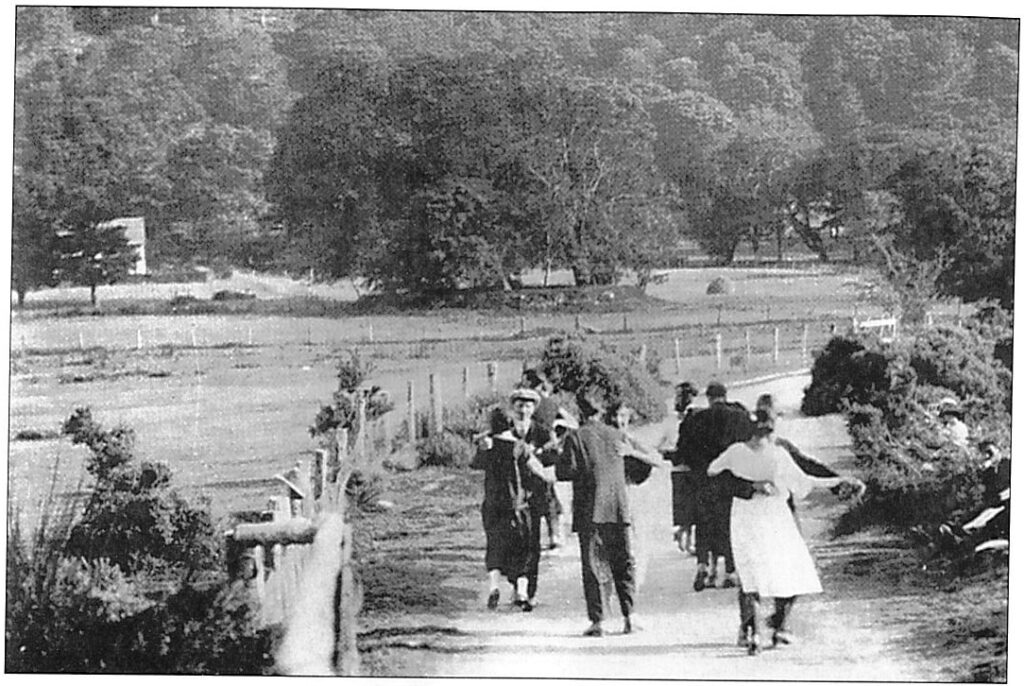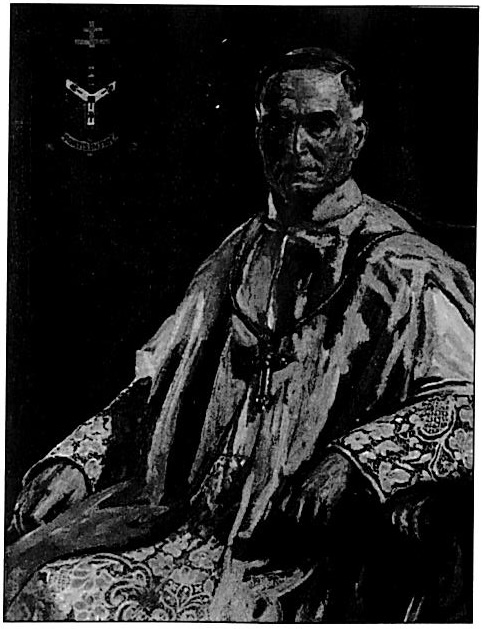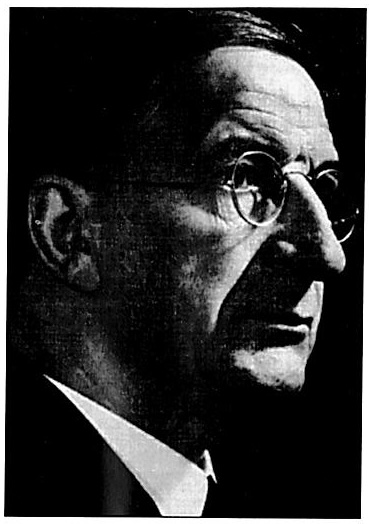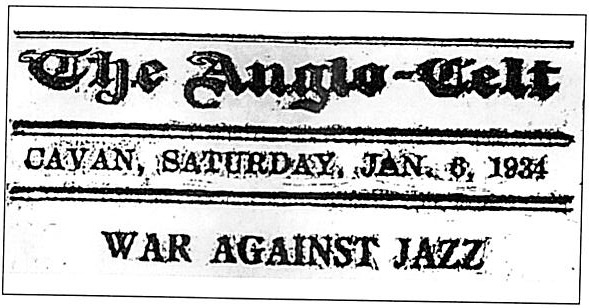by Jim Smyth
A protracted war of independence and a bitter civil war left the new Irish Free State with economic and social problems of enormous proportions – the economy and infrastructure were ravaged, unemployment and ill-health were endemic and the wounds of the civil war were far from healed. But the agenda of perhaps the most powerful organised force in the country – the Catholic Church – was noticeably different.
In the Lenten pastorals of 1924 the bishops made their preoccupations unmistakably clear:
The Irish bishops in their Lenten pastorals refer to the existence of many abuses. Chief among these may be mentioned women’s fashions, immodest dress, indecent dancing, theatrical performances and cinema exhibitions, evil literature, drink, strikes and lock-outs.
A constant obsession
Among this litany of putative abuses, one obsession remained constant and central for the next decade: the dangers attributed to the morals of the young posed by unlicensed dance halls and unsupervised dancing of any sort. This popular rural pastime became a classic terrain of fantasy projection and pseudoknowledge, involving a potent brew of alleged sources of evil and degradation: cars, darkness, jazz music and the prospect of illicit and unsupervised dalliance between the sexes. Just as the advent of the railways was treated with horror by a section of Victorian England, and the bicycle was condemned by The Times in i898 as adding an ominous dimension of mobility to the ‘organised terrorism of the streets’, the motor car was seen as an instrument of seduction in the hands of unscrupulous males. Cardinal MacRory in his pastoral letter of 1931 stressed the danger of too much mobility:
Even the present travelling facilities make a difference. By bicycle, motor car and bus, boys and girls can now travel great distances to dances, with the result that a dance in the quietest country parish may now be attended by unsuitables from a distance.
The clergy were not against dancing in principle – as long as the dances were Irish (confined, of course, to the modest ceilí dances and not the wilder and less restrained set dances) and the supervIsIon was close. Cardinal Logue in his pastoral of 1924 set the tone:
It is no small commendation of Irish dances that they cannot be danced for long hours. That, however, is not their chief merit. And while it is not part of our business to condemn any decent dance, Irish dances are not to be put out of the place that is their due in any educational establishment under our care. They may not be the fashion in London and Paris. They should be the fashion in Ireland. Irish dances do not make degenerates.
The Carrigan Report
During the latter half of the twenties, the demands of the bishops for legislation on personal morality became more vocal, an implicit admission that the church was unable to stem the rising tide of immorality which they claimed had engulfed the Free State after 1922. The focus of the campaign for legislative change was the amendment of the Criminal Law Amendment Acts of 1880 and 1885 (Stead’s Act) which were originally enacted to combat juvenile prostitution, protect minors and make brothel keeping an offence. The fact that one in six houses in London was a brothel during that period may have had something to do with the passing of this Act. The government response was the Carrigan committee (called after its chairman) which reported in 1931, having heard a large number of witnesses in private. None of this evidence was published in the press and the final report was never published. The committee interpreted its brief as nothing less than an inquiry into the moral state of the country:
Under the terms of our reference we had to consider the secular aspect of social morality which is, the concern of the state to conserve and safeguard for the protection and well being of its citizens. We looked upon it as our duty in the first place to collect sufficient information from such authentic sources as would enable us to determine whether the standard of social morality is at present exposed to evils, which the existing laws of the Saorstat for the suppression and prevention of public vice, are inadequate to check, and, should they be in our opinion inadequate, to consider how best they can be made effectual.
The report makes it clear from the start that its conclusions were unanimous and that this unanimity even stretched to those giving evidence before the committee:
No witness appearing before us has dissented from the view expressed by nearly every witness that the moral condition of the country has become gravely menaced by modern abuses, widespread and pernicious in their consequences, which cannot be counteracted unless the laws of the state are revised and consistently enforced so as to combat them.
The committee, having established the dreadful moral state of the country, then proceeded to uncover the causes. The conclusion arrived at was that illegitimacy was in large measure to blame:
Illegitimacy must be regarded as one of the principal causes of the species of crime and vice of which the state takes cognisance in the branch of penal and preventative legislation which we were appointed to examine.
The misuse of motor cars
Although the report did not spell it out, the implication was clear: young unmarried mothers were forced into prostitution as a result of their fallen state, and, indeed, could constitute an occasion of sin for others during confinement in Poor Law institutions: ‘it is an objectionable fact that unmarried mothers of first-born children cannot be maintained apart from other inmates (the decent poor and sick)’. The report then moves on to the reasons for the alleged rise in illegitimacy and lays the blame clearly at the door of the dance halls:
The testimony of all witnesses, clerical, lay and official, is striking in its unanimity that degeneration in the standard of social conduct has taken place in recent years. It is to be attributed primarily to the loss of parental control and responsibility during a period of general upheaval, which has not been recovered since the revival of settled conditions. This is due largely to the introduction of new phases of popular amusement, which being carried out in the Saorstat in the absence of supervision, and of the restrictions found necessary and enforced by law in other countries, are the occasions of many abuses baneful in their effect upon the community generally and are the cause of the ruin of hundreds of young girls, of whom many are found in the streets of London, Liverpool and other cities and towns in England. The ‘commercialised’ dance halls, picture houses of sorts, and the opportunities afforded by the misuse of motor cars for luring girls, are the chief causes alleged for the present looseness of morals.

Social conditions
Social conditions were hardly conducive to the standards of morality demanded by the clergy. The census of 1926 found that 800,000 people were living in overcrowded conditions – defined as more than two to a room – more than 25% of the population. Infant mortality among the Dublin working classes was 25.6 per 1,000 births as compared to 7.7 per 1,000 among the middle classes. The illegitimacy rate was 30.7 per 1,000 births for the country as a whole, although this figure showed considerable regional variations. The fact that 80% of all males between the ages of 25 and 30 were unmarried, as were 62% of all females in the same age group, might have led some observers to query why the illegitimacy figures were so low but this line of inquiry did not seem to occur to the commission. To postulate a link between social conditions and social problems, not to mention personal behaviour, would have been ideologically impossible for a clergy and middle class infused with the ethos of Victorian morality. The lack of concern on the part of the hierarchy for the plight of the poor is explicable in the context of a clerical near-monopoly of welfare services, such as they were, through the network of charitable organisations. These organisations were not only inadequate but also punitive and repressive. To stress, or even allude to, the desperate plight of the poor would not only expose the minimal nature of church provision but raise the spectre of state intervention. This is a far cry from current church policy, as expressed in successive budget submissions, which argues for greater state intervention. The 1931 Carrigan Report was an admission that the clergy were unable to control their flock in the all-important area of sexual morality and that the state would have to take punitive measures before things got out of hand.
The problem of illegitimacy
The only factual evidence produced in the report to support the demand for more repressive legislation related to the claim that the level of illegitimate births had risen sharply since the foundation of the Saorstat. Figures based upon total annual births showed a 29% increase between 1912 and 1927. But as total annual births show considerable variation (emigration being an important factor in the Irish case) the figures were not comparable from year to year. It is now accepted that the most accurate method is to measure birth rate per 1,000 among single and widowed women who are the actual population concerned. This shows an ambiguous picture of a fluctuating rate, only slightly higher in 1927 than in 1872. But figures on illegitimacy are notoriously difficult to interpret in terms of their sociological significance. It is clear that in times of war figures tend to rise, but no conclusions can be drawn on the relationship between these figures and levels of morality since the latter notion is entirely subjective. What does stand out in the Irish case, however, is the clear relationship between the level of emigration and the figures on illegitimacy. As emigration falls – as it did between 1926 and 1933 – the level of illegitimate births rises. The lowest level reached after independence was in the fifties when emigration was at its highest since the Famine.
The response of the state
Copies of the Carrigan Report were printed up in the normal way but it was decided that the contents could prove embarrassing if made public. Department of Justice officials were dismissive of it, as a memorandum now in the State Paper Office shows:
Unless these statements are exaggerated (as they might easily have been owing to the anxiety of the reverend gentlemen to present a strong case to the committee), the obvious conclusion to be drawn is that the ordinary feelings of decency and the influence of religion have failed in this country and that the only remedy is by way of police action. It is clearly undesirable that such a view of conditions in the Saorstat should be given wide circulation.
The civil servants were particularly scathing of the attempt to link immorality with the existence of unlicensed dance halls:
This section of the report wanders some way from the terms of reference. The committee might equally have concerned itself with housing, education, unemployment or any other matter which might have had an indirect effect on prostitution and immorality. Their suggestions amount almost to a suppression of public dancing.
In its conclusion, the memo comes out firmly against increased repression as a means of enforcing morality:
On the whole the report, should be taken with reserve: their recommendations are invariably to increase penalties, create offences, and remove existing safeguards for people charged: their main concern seems to be to secure convictions.
Action on the report was slow. It had been submitted in August 1931 and the Departmental memorandum is dated October 1932, indicating that the Cosgrave government, which had previously shown some courage in the face of episcopal pressure, was not prepared to move swiftly on the matter, particularly as a general election was due the following year. The election was won by Fianna Fail and the new government, headed by Eamonn de Valera, was soon to show itself to be more than pliant when faced with the demands of the bishops. The new Minister for Justice, however, agreed with his officials that the report should not be published and expressed serious doubts . as to the picture of the country presented when he submitted it to the Executive Council (the equivalent of the cabinet). Instead of immediate action, an all-party committee was set up to make recommendations. The committee met in secret; its membership was never revealed, nor were its recommendations. The senate went to great lengths when the Criminal Law Amendment Bill was being debated some two years later to avoid discussing the report or the conclusions of the all-party committee. Indeed, when reading the senate record, it is often difficult to identify the subject being discussed so dense are the circumlocutions.
In December 1932, the Minister for Justice met with the bishops who put their case for legislation as proposed in the report. The problems discussed embraced the usual litany of clerical obsessions: dance halls, the age of consent, prostitution, motor cars and immoral behaviour on the public highway. The government obviously took the ‘motor car scandal’ seriously but faced insurmountable difficulties in drafting legislation. Not only was car ownership a middle class privilege but it was impossible to restrict the use of cars or even legislate for the behaviour of individuals within a vehicle. The ingenious solution was to define a motor car as a street in the paragraph dealing with soliciting and importuning in the bill: ‘The word street in this section (shall) include a motor car, carriage or other vehicle’. This allowed the police to treat a car as a public place and use their discretion as to the nature of behaviour within. The Alicein- Wonderland nature of this logic led the irrepressible Dr Mahaffey, whose witty and pertinently liberal speeches enliven an otherwise dull senate record, to suggest that a wheelbarrow was a street and therefore could be used for an immoral purpose!
The anti-jazz campaign
Meanwhile the pressure for constraints on the dance halls was becoming intense. The Gaelic League re-launched its anti-jazz campaign in 1934 with a statement very much in tune with the sentiments of the bishops:
It is this music and verse that the Gaelic League is determined to crush…its influence is denationalising in that its references are to things foreign to Irishmen: that it is the present day instrument of social degradation is all too plain, even in Ireland. That was the reason for the re-Iaunching of the anti-jazz campaign, the reason it received the blessing of the church and the approval of the state.
The League was quick to condemn politicians who were seen as behavin an ‘anti-national’ fashion. The Secretary of the League, attacking the broadcasting of jazz on Radio Eireann, had this to say about the minister responsible:
Our Minister of Finance has a soul buried in jazz and is selling the musical soul of the nation for the dividends of sponsored jazz programmes. He is jazzing every night of the week.
A number of County Councils adopted resolutions condemning jazz and all-night dancing and District Justices took up the refrain talking of the dangers of ‘nigger music’ and the orgy of unrestricted all-night dances’. In January 1934 a large demonstration took place in Mohill, County Leitrim. It was made up mostly of young people and the press estimated the attendance at 3,000, with five bands and banners inscribed with DOWN WITH JAZZ and OUT WITH PAGANISM. Support came from church and state. A letter from Cardinal McRory was read out:
I heartily wish success to the Co. Leitrim executive of the Gaelic League in its campaign against allnight jazz dancing. I know nothing about jazz dancing except that Iunderstand that they are suggestive and demoralising: but jazz apart, allnight dances are objectionable on many grounds and in country districts and small towns are a fruitful source of scandal and ruin, spiritual and temporal. To how many poor innocent young girls have they not been an occasion of irreparable disgrace and lifelong sorrow?
The campaign was given official state blessing in a letter from Eamonn de Valera:
I sincerely hope that the efforts of Conradh na Gaeilge in your county to restore national forms of dancing will be successful, and within the reasonable hours which have always been associated with Irish entertainment.
The 1935 Act
It was eventually decided that dance halls should be the subject of separate legislation, which was passed in 1935 without debate in the Dail. The act was draconian, making it practically impossible to hold dances without the sanction of the trinity of clergy, police and judiciary. With its passing, the hierarchy could rest content that its proposals for the legal control of personal morality had, without serious modification, been transformed into law. But like many laws in Ireland it was probably honoured more in the breach than in the observance. Enforcement seems to have been patchy and the overall effect is hard to assess.
Jim Smyth is a lecturer in sociology at Queen ‘s University, Belfast.
Further reading:
T. Inglis, Moral Monopoly: the Catholic Church in modem Irish society (Dublin 1987).
J.H. Whyte, Church and State in modem Ireland (Dublin 1984).
T. Brown, Ireland: a social and cultural history 1922-79 (London 1985).



